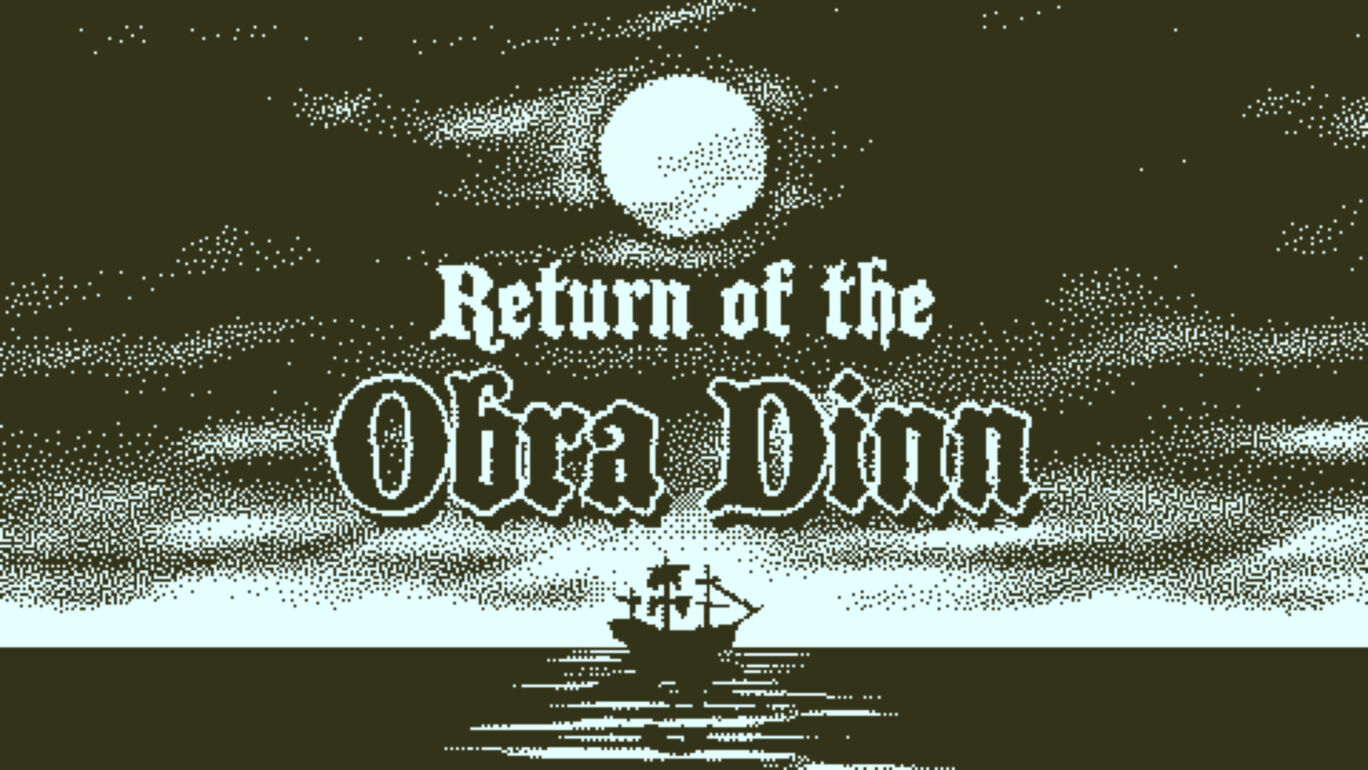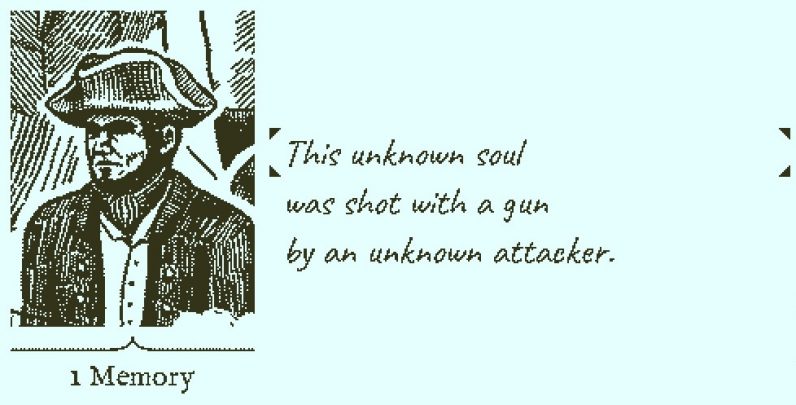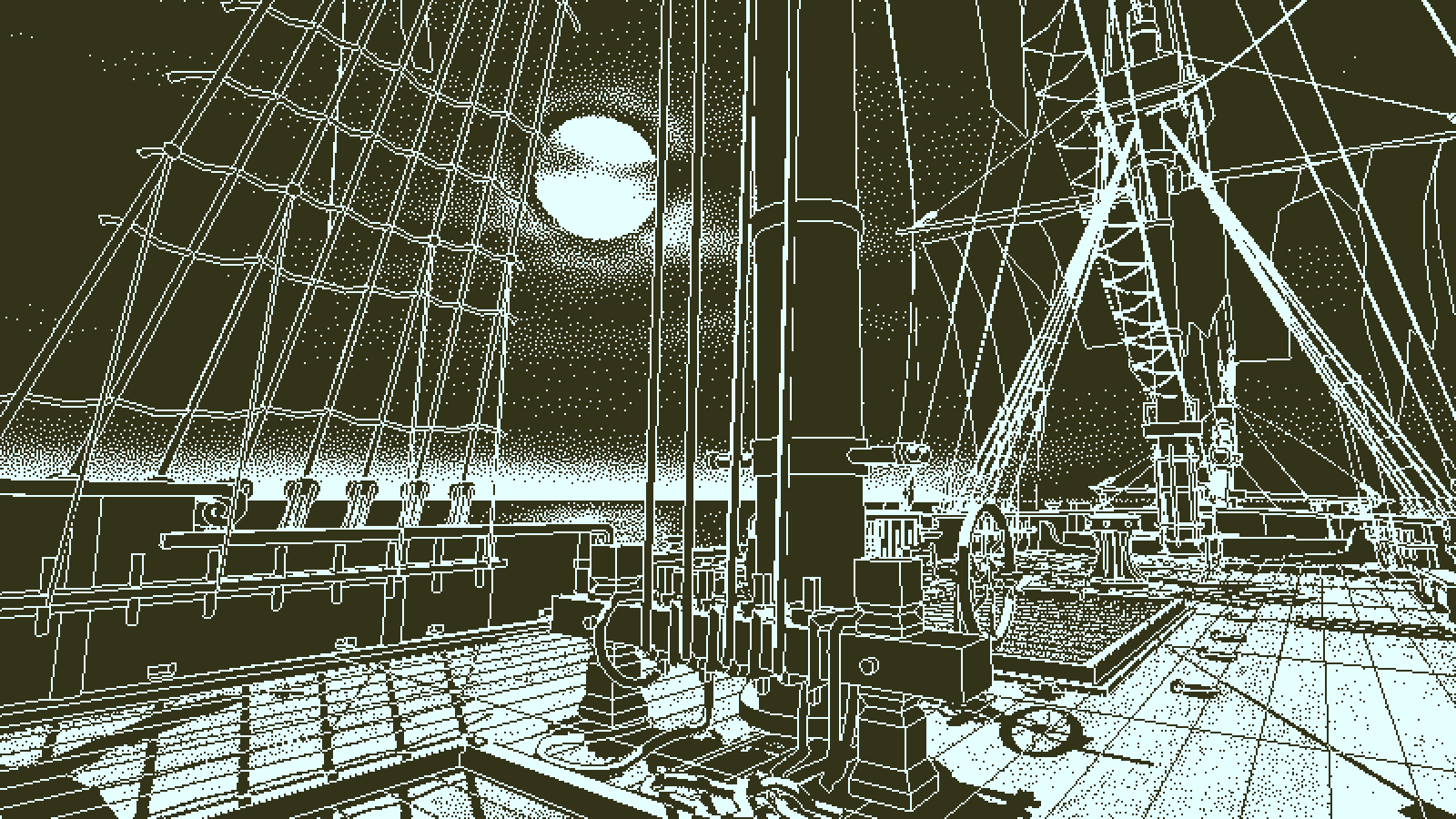
Introduction
Return of the Obra Dinn is a detective game set in 1807 in which you play as an insurance investigator on a ship called the Obra Dinn. The titular ship had been missing for five years before reappearing off the cost of England, with everyone on board dead or missing. Your job is to go onto the ship, and figure out the identity and fates of everyone there.
To accomplish this, you have a magic pocket watch which, when brought next to a corpse on the ship, will trigger a “memory”. During this memory, you will be given a short audio clip of the moment right before that person died, and then a still 3D scene of the ship at that exact moment they died, which you can explore to find clues. For each person, you’re tasked with solving two questions: Who is this? And how did they die?
If it’s still not clear how the game works, you can check out the trailer and a gameplay video that explains the game below (note that the latter has spoilers after around the 1 minute mark)
The Elemental Tetrad
Mechanics
The core of the game consists of a couple of gameplay mechanics:
- The Death Memories: For most of the game, the player will be entering each person’s death memory, listening to the short audio clip, and then exploring the scene. In these memories, the player hunts for clues that can help them deduce a person’s identity and fate. These memories are also where the player learns the story of the ship.
- The Ship Logbook: Alongside the pocket watch, the player is given a ship logbook that contains a ton of useful information. This includes a manifest that lists the names, nationality, and occupation of everyone on board; a map of the ship; and important info about each memory. The information in the ship logbook is crucial to solving everyone’s fates and identities. The logbook also makes it easier for the player to keep track of all the info they’ve gotten.
- Submitting Your Answer: The logbook also lets the player input your guess for the identity and fate of each person. This is done by selecting a name from a dropdown list, and then selecting a cause of death from another dropdown list.

- Deduction: Technically this isn’t in the game, but player deduction is important to solving the fates. The memory flashbacks and the ship logbook will give you clues and information, but it’s up to the player to figure out how to use the clues to deduce each person’s identity and fate.
Story
As mentioned before, the game is set in England in 1807. The player plays as an insurance agent investigating the now-deserted Obra Dinn, which vanished five years ago before mysteriously reappearing near the coast. Everyone on board the ship is either dead or missing.
The story of what happened to the ship and everyone on board is told non-linearly through the memories. For example, the first corpses you will encounter on the ship are of the last people who died. Furthermore, because the memories are short and do not completely show every event, the player is required to put the memories together in order to figure out the story. In this way, learning what happened to the Obra Dinn is very much a part of gameplay as it is a story.
Aesthetics
The game is rendered in a 1-bit monochromatic style that is reminiscent not only of old Macintosh computers, but also of old ship logbooks and paintings with their black-and-white coloring. The music of the game is heavy on violins and orchestra, and it also draws inspiration from jaunty sailor tunes. There is also some voice acting for the audio clips that manages to convincingly emulate 19th century dialogue and accents. All of this helps to immerse the player in the atmosphere of being on a ship in the 19th century.
Technology
Return of the Obra Dinn is a 3D video game in first-person perspective, which both helps immerse you and allows you to explore the memory scenes freely. The game also makes use of rendering techniques like dithering to create the unique 1-bit art style.
The Five Lenses
The Lens of Emotion (#1)
The primary emotion that Return of the Obra Dinn evokes is the “Eureka!” moment when the suddenly realize the solution to a problem they’ve been stuck on. There are many times when playing the game where the player will be at a total loss on a person’s identity, only to suddenly find a crucial clue or an insight that would lead to a breakthrough. The game ensures that the “Eureka!” moment will happen again and again by requiring you to use many different kinds of clues and deductive reasoning to identify everyone. For example, clues can include a person’s nationality, their uniforms, their relationships with others, the timeline of events, process of elimination, and so on. The player will need to have many insights and realizations in order to solve everyone’s identities and fates.
The Lens of Motivation (#23)
Return of the Obra Dinn motivates the player in the same way any good mystery does: making them wonder “What happened here?” The ship disappeared and reappeared under mysterious circumstances, and everyone on board is either missing or dead! The player will be motivated to play the game just to find out what happened to the ship and each person aboard it. Furthermore, the game frequently shows memories in reverse chronological order, so each memory teases the player with questions of what could have happened in previous memories to lead to this event.
The main goal of the game, to find out the identity and fate of each person on the ship, is also a fascinating mystery in and of itself, and further motivates the player to solve them.
The Lens of Novelty (#24)
The main mechanics of Return of the Obra Dinn are extremely novel (what other game lets you view people’s death memories in a non-linear order to play detective?) and alone could entice players to play the game. Although the game’s mechanics are basically the same throughout, the game still injects novelty to keep players interested by varying the settings the memories are in (some memories go out into the open sea!) as well as the methods used to deduce people’s identities.
However, the game struggles to retain novelty once all the memories have been viewed, and there isn’t any new content for the player to go through until after they finish all the fates. On the bright side, the game still manages to be engaging even after the novelty wears off as the player has to figure out the fates of every character on board.
The Lens of Secrets (#29)
Return of the Obra Dinn generally avoids calling attention to clues and requires the player to notice them instead. However, the player is given some information to help them out. For example, the player is told for each person how difficult it is to figure out their fate and identity through some triangles on top of the person’s portrait. Furthermore, the information for the memories in the logbook is recorded in chronological order, so the player can clearly see the timeline of events.
Another way Return of the Obra Dinn balances giving and hiding information is that it only tells player their answers are correct if they have 3 correct fates. This prevents the player from simply brute-forcing answers for each fate until the game verifies it as correct. However 3 correct fates is few enough that the player can still get a sense of progress as well as some verification before they get too lost.
Overall, the game delicately balances between giving information to players to prevent them from getting too confused or frustrated while still keeping enough in the dark so that players will have to make deductions and discoveries on their own, preserving those “Eureka!” moments.
The Lens of Beauty (#71)
A 1-bit monochrome art style is not what most people would consider to be beautiful, but Return of the Obra Dinn makes it work. The art style fits the 19th century seafaring setting of the game and helps immerse the player into that environment. The game also still manages to achieve some stunning visuals using the limited graphics style. Just look at the screenshot below of the view on the ship deck; it’s not even the most impressive visual in the game!

The game also manages to make the clinical process of identifying corpses beautiful. Initially, each dead person is just a name on the list, but as the player goes through the memories, they get to see glimpses of the personality and life that each person had, which makes their tragic fate much more emotional. The captain’s memory, in particular, is genuinely tearjerking once you learn about all the horror and tragedy he faced aboard the Obra Dinn.
